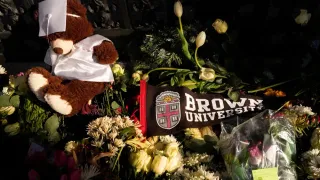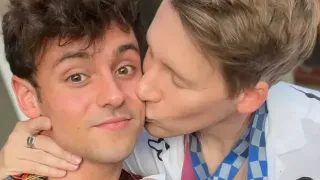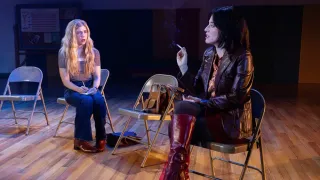September 27, 2014
Slow Down, Breathe, Relax -- Let Go
Kilian Melloy READ TIME: 3 MIN.
We are not human beings having a spiritual experience. We are spiritual beings having a human experience. And the human experience, unlike the spiritual one, is quite temporary. Our time on this planet is like a big temp job each of us has. Nothing here belongs to us, and everything is on loan from the universe - so we'll be turning it in on our last day here - including the body. We will not take one single thing with us, except what we learned while here and, the only les- sons worth learning, are the ones about love.
The problem with this human experience is that we fight too much. Even our every day language has been saturated with militaristic and aggressive verbiage. We fight the visible signs of aging, we fight the fat, we attack our disease, we want someone to "have our back." The only people who should be using the phrase "have my back" are people in the military or on the police force. All this daily fighting makes us tense and stressed out. It's a kind of internal resistance that wears down the moving parts of the body and torments the mind.
ABOVE THE BATTLEGROUND
The way back to the peace, love and joy of the spiritual life is not a path in which we learn to win the fight. In fact, it is one in which we rise above the battleground entirely while still going about our normal daily routine. It's not necessary to move to an island or an ashram because you can easily take the war with you into a temple or on a weekend spiritual retreat. The shift from fighting to serenity and joy is an internal one. We simply make an inner shift in which we rise entirely above the battleground.
You can do it right this moment. It's quite simple, really. Let your shoulders drop. Relax your jaw and all the muscles of your face and head. Relax your belly and your buttocks and sink into the chair as all the stress drains out your fingertips and the soles of your feet, like sand running through an hourglass. Let your thoughts slow down. Take a deep breath and let go of trying to make anything happen. Let go of trying to prevent anything from happening. Let go of trying to impress anyone. Let go of all shame, blame and guilt. Just be, exactly the way you are and exactly the way you are not - nothing to do, nothing to get, nothing to fix or change. Just be open to receiving the love, peace and joy of the universe that created you in perfect love.
OPPOSITE WORLD
The spiritual life is a life of paradox. It is really the opposite of everything that we've been taught by the culture about working hard, sacrificing, competing, making things happen, pushing, fighting and acquiring. In fact, my own personal experience has been the extreme opposite of that. It was like this for me - every time I tried to make money, I ended up in deep debt. When I tried to get fit and healthy, I ended up fatter and sicker. When I tried to get into relationships, the men ran from me as if my hair was on fire. When I tried to get approval, I was hated and criticized.
Now, my main spiritual practice is something I call "walking through the open doors." I no longer bang my bloody head against the doors that are locked to me. I've found that the less I fight and strive, the happier and more peaceful I am - wherever I might be, walking through the open doors.
Jacob Glass is an author and spiritual teacher in Southern California, for more information on him and his schedule go to jacobglass.com.
 Copyright Rage Monthly. For more articles from Rage visit
Copyright Rage Monthly. For more articles from Rage visit 





